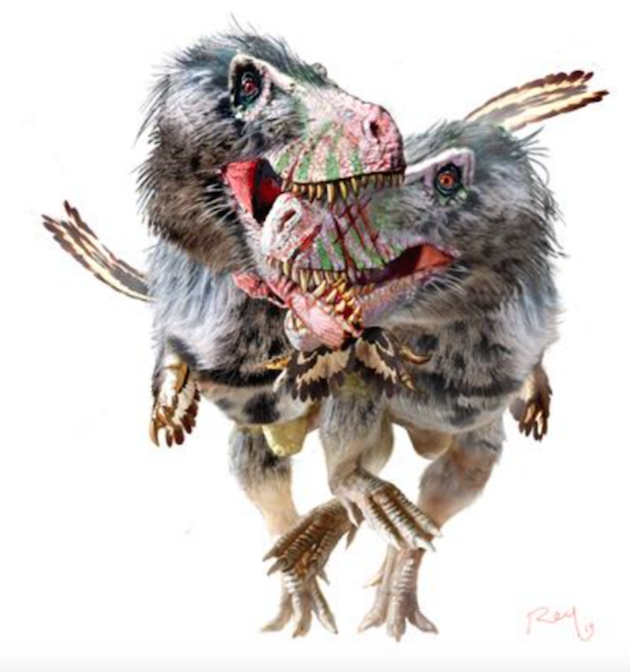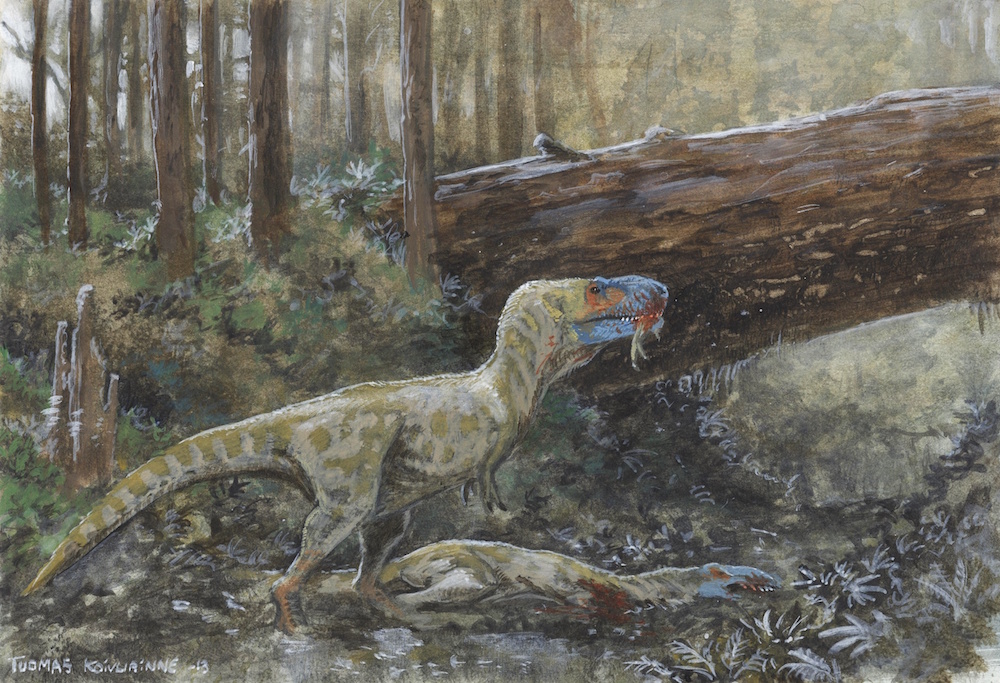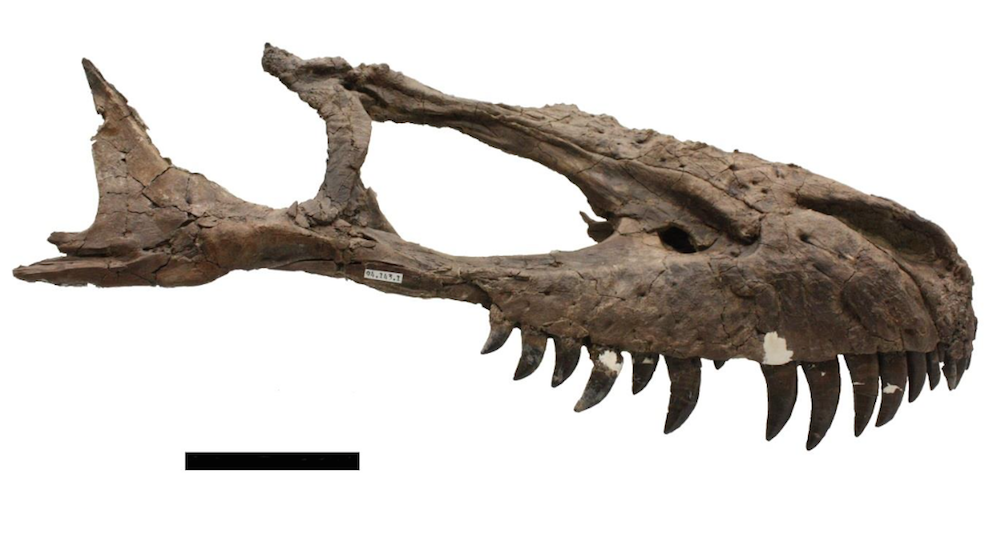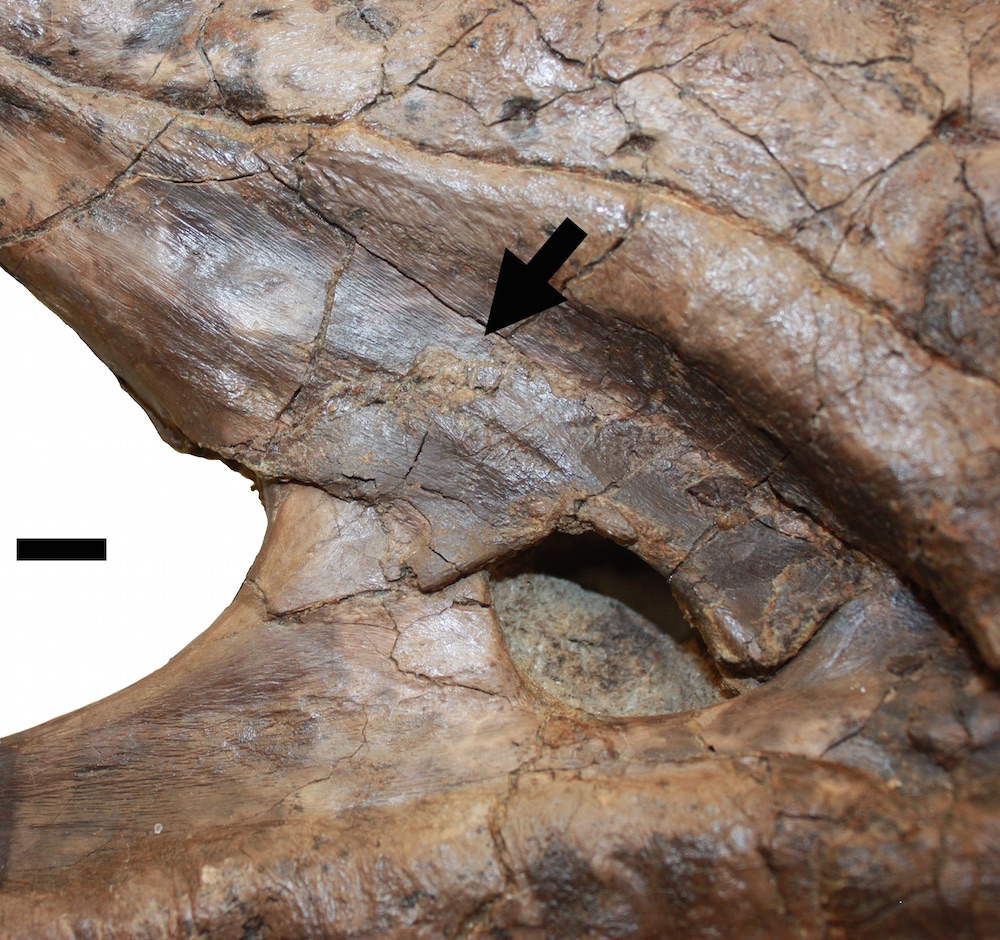Photos: Dinosaur's Battle Wounds Preserved in Tyrannosaur Skull
A 75-million-year-old tyrannosaur skull shows evidence of injuries that the dinosaur acquired during its lifetime and after its death, a new study finds. The researchers suggest that another tyrannosaur of the same genus (Daspletosaurus) may be to blame for its pre- and postmortem injuries, but other experts say it's difficult to say exactly what caused the dinosaur's wounds. [Read the story on the battered tyrannosaur skull]
Extreme fighting
An artist's interpretation of two Daspletosaurus fighting each other. A Daspletosaurus is a type of tyrannosaur, a meat-eating dinosaur that walked on two legs, had tiny hands, and sported large and sharp teeth. (Image credit: copyright: Luis Rey)
Dinosaur dinnertime
It's possible that a scavenger further damaged the Daspletosaurus' skull after the dinosaur died about 75 million years ago. The researchers found that four parallel marks on the right jaw, which is also broken closer to the face, were inflicted after the dinosaur had died.
It's possible that the four parallel marks are from widely spaced teeth belonging to another tyrannosaur, possibly of the same species, which would suggest cannibalism, the researchers said. In this image, an illustrator depicts one Daspletosaurus feeding on another.
However, other experts say more evidence is needed to pin the postmortem marks on any one dinosaur genus.
Get the world’s most fascinating discoveries delivered straight to your inbox.
(Image credit: copyright: Tuomas Koivurinne)
Fossil photo
The study's co-authors, Dave Hone (left) and Darren Tanke (right) sit with the Daspletosaurus skull and right jawbone (the paleontologists never found the left jawbone) at the Royal Tyrrell Museum in Alberta. (Image credit: Patty Ralrick)
Marred skull
The right side view of the Daspletosaurus skull. The largest of its teeth measure almost 2 inches (5 centimeters). The scale bar is 4 inches (10 cm). (Image credit: David Hone)
Right jaw
The right lower jaw of the daspletosaurus. Notice the bitten break point, which was possibly caused by another large tyrannosaur, the researchers said. (Image credit: David Hone)
Skull damage
The black arrow points to a lesion that was likely acquired during the Daspletosaurus' lifetime, the researchers said. The lesion is near the promaxillary fenestra, an opening near the front of the skull. (Image credit: David Hone | Hone and Tanke (2015) PeerJ 3:e885; DOI 10.7717/peerj.885 | Creative Commons Attribution License)
Follow Laura Geggel on Twitter @LauraGeggel. Follow Live Science @livescience, Facebook & Google+.

Laura is the managing editor at Live Science. She also runs the archaeology section and the Life's Little Mysteries series. Her work has appeared in The New York Times, Scholastic, Popular Science and Spectrum, a site on autism research. She has won multiple awards from the Society of Professional Journalists and the Washington Newspaper Publishers Association for her reporting at a weekly newspaper near Seattle. Laura holds a bachelor's degree in English literature and psychology from Washington University in St. Louis and a master's degree in science writing from NYU.








